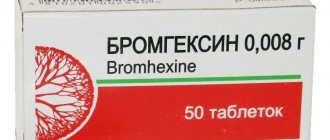Marshmallow (Althaea officinalis)
A perennial plant with an erect, slightly branched stem up to 1.5 m high and a powerful woody taproot with numerous lateral roots. The leaves are pubescent, ovate or heart-shaped, entire or with three or five lobes and an elongated apex. The flowers are white or pale pink, 2-3 cm in diameter.
The main medicinal raw material is marshmallow root, but flowers and leaves are sometimes used. Marshmallow root contains up to 35% mucous substances, starch, sugar, pectin and tannins. This ancient medicine is included in the pharmacopoeias of many countries. We widely know the cough medicine Mucaltin, which is made from marshmallow.
Thanks to mucous substances and pectin, marshmallow helps in the treatment of diseases of the upper respiratory tract, bronchial asthma, bronchitis, whooping cough, and pneumonia. A decoction of marshmallow root softens the vocal cords and trachea, heals affected mucous membranes, envelops them and protects them from irritation.
It is not difficult to grow marshmallows in a summer cottage in one year. In early spring, sow marshmallows in a prepared bed to a depth of 2-3 cm with a row spacing of about 50 cm. For sowing, it is better to take 2-3-year-old seeds. 3-5 days before sowing, soak them in water, this will speed up germination. When sowing thickly, remove excess shoots, leaving a distance between plants of about 10 cm. On fertile, loose soils with good care in the first year you can get 150-200 g of fresh roots from 1 sq.m. In the fall, dig up the marshmallow, cut off the above-ground part, shake off the soil and quickly wash the roots. Dry at a temperature of 50-60°C, cut thick roots lengthwise.
Marshmallow root
Marshmallow decoction . Take 2 tbsp. (6 g) of dry marshmallow root, pour 200 ml of hot boiled water and heat in a water bath for 30 minutes, cool for about 10 minutes, strain and squeeze out the raw materials. Bring the broth to a volume of 200 ml with boiled water. Drink half or a third of a glass hot 3-4 times a day after meals.
Marshmallow root syrup . Take 40 g of crushed roots, pour 1 liter of hot water, cook on low heat for 15 minutes, strain. Add 1.5 kg of sugar to the broth, slowly evaporate to half the volume. Pour the syrup into dark glass containers. Take 2-4 tbsp. in a day.
List of cough herbs
All cough herbs act in two directions: either to suppress the cough center or to clear the respiratory tract of phlegm.
Table 1 – List of cough herbs
| From dry | From wet |
| Eucalyptus, mint, lemon balm, linden blossom, angelica root, chamomile, valerian, motherwort, fir, pine, calamus | Licorice root, calendula, St. John's wort, sage, oregano, plantain, elecampane, coltsfoot, black elderberry flowers, cinquefoil, fennel, lavender, fragrant and tricolor violet, lungwort, thermopsis |
| Marshmallow, ivy, thyme, wild rosemary | |
A child under 1 year old can brew tea from chamomile, licorice root, mint, calendula, oregano and thyme. For older children, coltsfoot, marshmallow, ivy, St. John's wort, thermopsis and others are suitable. {3}
From 3 years old, you can give pharmaceutical Breast collection No. 1, 3 and 4.
Sage, eucalyptus, chamomile, linden flowers are suitable for pregnant women, but only after consultation with a gynecologist.
If you are prone to bronchospasm, you should use lemon balm, oregano, elderberry flowers, chamomile, linden, and valerian root. These same plants are effective for painful non-productive coughing.
Common anise (Anisum vulgare)
An annual plant with a branched stem 50-70 cm high and three-lobed or pinnately dissected leaves. White flowers are collected in a complex umbrella. The fruit is a ribbed, ovoid two-seeded seed.
The medicinal raw materials are anise fruits; they contain valuable essential oil, which has a mild expectorant and bactericidal effect. Anise oil and fruits are included in preparations for the treatment of respiratory diseases, laryngitis, tracheitis, and bronchitis. Such drugs are especially popular in pediatrics.
The plant does well in warm temperate climates and is easy to grow on site. Sow it in a garden bed with well-drained, fertile, light soil. On heavy, damp, clayey soils, anise does not develop well. The culture is cold-resistant, seedlings can appear at a soil temperature of 4-5°C, but germinate better at 20°C. Before sowing, soak the seeds until they bite, this will speed up the emergence of seedlings. In the first half of summer, anise develops slowly; it needs to be weeded, loosened, and watered. Anise is harvested when the fruits turn greenish. The plants are cut and laid out to dry in a dry place. After 3-5 days, the fruits are threshed and dried.
Anise fruit
Anise fruit infusion . Take 5 g (1 tsp) of anise fruit, pour 200 ml of hot boiled water, heat in a water bath for 15 minutes, leave for 45 minutes. Strain, squeeze out the raw materials and add water to 200 ml. Take 1/4 cup 3-4 times a day half an hour before meals.
An infusion of anise fruits with honey (1 tablespoon per glass of infusion) quickly restores the vocal cords and returns the voice lost due to a cold. Take the infusion 1 tbsp. each hour.
Indications for the use of cough herbs
Herbal medicine is an aid in the treatment of the following diseases:
- ARVI;
- inflammation of the pharynx, larynx, lower respiratory tract;
- bronchitis;
- pneumonia and other respiratory diseases.
Medicinal plants will also help soothe cough caused by irritation of the mucous membranes with allergens, smoke, dust, too dry air, and foreign bodies.
To get rid of a cough, symptomatic therapy alone is not enough. It is necessary to eliminate the cause, strengthen the immune system in order to prevent the development of chronic respiratory diseases.
Elecampane (Inula helenium)
A large perennial plant up to 2 m high with a powerful, short rhizome and long, fleshy roots. The leaves are large, wrinkled, pubescent below. The flowers are golden-yellow, collected in large baskets at the ends of the shoots and form a rare corymbose or racemose inflorescence.
The medicinal raw material of elecampane is rhizomes with roots; it was used in ancient times, it is also mentioned in ancient Russian herbalists. Rhizomes and roots contain essential oil, which gives them a pleasant aroma, as well as polysaccharides (inulin), resins, saponins, vitamin E, and minerals. Elecampane has an expectorant and anti-inflammatory effect, reduces bronchial secretion. It is recommended for bronchitis, tracheitis, and influenza; it is effective in cases of the release of large amounts of thick and viscous sputum.
Elecampane is propagated by seeds or cuttings of rhizomes with buds. Before planting or sowing, apply organic fertilizers to the garden bed and carefully dig up the soil. In the first year, a rosette of leaves is formed; elecampane reaches full development in the third year. The plant is dug up during the period of fruit formation, quickly washed, cut into pieces about 10 cm long and dried in the sun or in a ventilated area. When artificially drying, the roots and rhizomes are first withered for 2-3 days and then dried at a temperature of 40°C.
Elecampane root
Infusion and decoction of elecampane . To prepare the infusion, 1 tsp. dry roots, pour 1 glass of warm boiled water and leave for 10 hours. To obtain a decoction, pour 1 tablespoon of raw material into a glass of hot water and heat in a water bath for 30 minutes, stirring constantly. Leave for 10-15 minutes, strain and squeeze out the raw materials. Take half a glass warm 1 hour before meals 2-3 times a day.
Oregano (Origanum vulgare)
A perennial plant up to 90 cm high with numerous, branched, green or purple stems. Oblong leaves up to 5 cm long are located opposite. Small lilac-pink flowers are collected at the ends of the shoots in corymbose panicles.
The medicinal raw material is oregano herb, it contains essential oil, flavonoids, tannins, and mineral elements. Oregano has an expectorant effect and is recommended for chronic and acute bronchitis. It is included in chest and diaphoretic teas, in a collection for gargling for chronic tonsillitis and sore throat.
Oregano grows well in one place for at least 5-7 years, it is decorative and can become a soloist in your medicinal flower garden. Oregano is propagated by seeds; they are sown in spring in heated, carefully dug and leveled soil to a depth of 1 cm. Oregano seedlings are very small and require care at first. Thickened crops are thinned out, leaving plants at a distance of 15-25 cm from each other. Oregano can be propagated by rhizomes, planting them in early spring or late summer. Seedlings bloom in the second year. The raw materials are harvested during flowering, the stems about 20 cm long are cut, dried under a canopy, then threshed to remove coarse stems.
Oregano herb
Infusion of oregano herb . Take 2 tbsp. raw materials, pour 200 ml of hot boiled water and heat in a water bath for 15 minutes. Leave for 45 minutes, strain, take half a glass 2 times a day 15 minutes before meals.
Green tea
Green tea has long been consumed as a beverage. However, it is also used for a variety of medicinal purposes, ranging from weight loss and headaches to concentration.
One study found that gargling with green tea after anesthesia for coronary artery bypass surgery helped reduce coughing and hoarseness more effectively than gargling with distilled water. (https://www.ncbi.nlm.nih.gov/pmc/articles/PMC4803870).
Green tea may also be effective in suppressing germs. Generally safe when consumed in moderation. It does contain caffeine, which may cause nervousness or insomnia.
How to cook:
From the leaves: Bring 1 cup of water to a boil. Remove from heat and let cool for about 1 minute. Infuse 1 teaspoon of green tea leaves for about 3-5 minutes. Strain before use.
From powder: Bring 1 cup of water to a boil. Remove from heat and let cool for about 1 minute. Soak 1 1/2 teaspoons of green tea powder in water for about 3 minutes. Strain before use.
Common coltsfoot (Tussilago farfara)
A perennial herbaceous plant with creeping branched rhizomes and thin roots. In early spring, pubescent flower stalks with scale-like leaves and yellow flowers appear, collected in baskets. After flowering, large heart-shaped basal leaves grow up to 25 cm in diameter; they are distinguished by white felt pubescence on the underside.
Medicinal raw materials are leaves; they contain saponins, organic acids, polysaccharides, steroid compounds, essential oil, mucous substances. Coltsfoot has an enveloping effect on the mucous membranes of the mouth, throat, larynx, relieves irritation, facilitates the discharge of sputum, and has an anti-inflammatory effect. It is effective for various inflammatory processes in the mucous membranes of the respiratory system, for laryngitis, tracheitis, and bronchitis.
Coltsfoot leaves
Coltsfoot is a widespread plant; it is often found along the banks of rivers and streams, on screes, sand drifts, in wastelands and as a weed. Leaves are harvested at the beginning of summer, leaves without rust stains are taken, dried in a well-ventilated area, laid out in one layer with the hairy side up. Dryers can be used to dry at temperatures not exceeding 50°C.
Tea from coltsfoot leaves
Infusion of coltsfoot leaf . Take 1 tbsp. raw materials, pour 200 ml of hot boiled water and heat in a water bath for 15 minutes, stirring constantly. Leave to cool for 45 minutes, strain and squeeze out the raw materials. Take warm, half or a third of a glass 2-3 times a day, an hour before meals.
How do cough herbs work?
Coughing is a reflex way of clearing the airways of mucus, with the help of which the body tries to get rid of infectious agents and allergens. That is, it is an important protective mechanism that helps speed up recovery.
With a cold or acute respiratory viral infection, an inflammatory process occurs in the upper respiratory tract, where cough receptors are located. As a result, they become irritated. The muscles contract, and with the help of reflex jerky movements of the diaphragm, the body tries to get rid of the pathogenic pathogen. The result is a cough that can be dry or wet. Its type must be taken into account when choosing medicinal plants. {1}
A dry or unproductive cough injures and irritates the mucous membrane, thereby strengthening and supporting itself. It is not accompanied by sputum secretion, and therefore does not clear the respiratory tract of the infectious agent.
Herbs for dry cough should have the following actions:
- antitussive – suppress the cough reflex, which is not physiologically justified;
- enveloping;
- softening;
- anti-inflammatory;
- sedative;
- antimicrobial.
The goal of herbal medicine for dry cough is to stop painful attacks and achieve sputum separation.
A wet, wet or productive cough is accompanied by the release of sputum (mucus), which is produced by the mucous membrane of the respiratory tract. It brings relief, helps remove mucus along with infections and allergens due to the motor activity of the ciliated epithelium and muscle contraction.
Herbs for wet coughs should have the following effect:
- expectorants – promote the removal of mucus from the respiratory tract by increasing mucociliary clearance (natural cleansing) of bronchial secretions;
- mucolytic - dilute sputum, thereby facilitating its removal from the lungs and bronchi;
- anti-inflammatory.
The goal of herbal medicine for wet coughs is to facilitate and accelerate the removal of sputum and reduce its production.
Unlike medications, herbal mucolytics do not cause excessive production of bronchial secretions, therefore they are safe for young children who do not know how to fully cough.
Great plantain (Plantago major)
A perennial herbaceous plant 15-30 cm high with a short rhizome and fibrous roots. Wide oval leaves with a long petiole are collected in a rosette; they are distinguished by 5-8 protruding veins. Small flowers are collected in a long cylindrical spike.
Plantain leaves contain glycosides, bitter and tannins, saponins, polysaccharides, mucus, flavonoids, and organic acids. Plantain acts as an anti-inflammatory, analgesic, and secretolytic agent for respiratory diseases that are accompanied by the release of thick secretions, helps thin mucus and facilitates its removal when coughing. It is prescribed for bronchitis, bronchial asthma, whooping cough.
The plant is found everywhere on the sides of roads, paths, near housing, and is a weed in gardens and orchards. To obtain medicinal raw materials, plantain is specially cultivated, but gardeners can easily find it on or near their site.
Do not collect medicinal plants near the highway; in case of heavy traffic, the distance from it should be at least 500 m.
The leaves are harvested during flowering. Select whole ones that are not affected by diseases and pests; they are carefully cut with scissors or pruners so as not to damage the roots. Dry in the shade, laying out in a thin layer, turning over periodically. In dryers - at a temperature of no more than 50°C.
Plantain infusion . Take 1 tbsp. dry leaves, pour a glass of boiling water, leave in a warm place covered for 10 minutes, strain. Take 1/3 cup hot 10 minutes before meals 3 times a day, or sip the daily dose within an hour.
Useful tips
Shall we steam our feet?
Many people are sure that the best remedy for a runny nose is to thoroughly steam your feet before going to bed. Foot baths really help, but only if you soak your feet for no longer than five minutes. The fact is that the effect of foot baths is based on the mechanism of vasoconstriction (most nasal drops have approximately the same effect). When you hover your legs, blood rushes to the lower extremities, the vessels of the head begin to narrow and the runny nose disappears. If you keep your feet in the basin for a long time, say half an hour, your blood vessels will begin to expand again, blood will again flow to the nasal cavity, and inflammation may develop that significantly exceeds the initial one. That is, paradoxically, instead of disappearing, the runny nose will get worse.
Diet for immunity
To avoid autumn colds, take care of your immunity in advance.
Include animal proteins in your menu. They contain essential amino acids that are necessary for the good functioning of the immune system. Therefore, under no circumstances deny yourself lean meat, fish and poultry.
Don't forget about vitamins and microelements. Friends of your immunity are selenium (there is a lot of it in fish and seafood), zinc (found in seafood, oatmeal, liver, pumpkin seeds), fiber (it can be found in bran, legumes, vegetables and fruits). But still, the main ally of the immune system is vitamin C, so load up on fruits, green vegetables and cabbage!
Don't be fools! How to make your own medicine from berries, herbs and mushrooms Read more
Dry or wet?
A dry cough often accompanies laryngitis, the initial stage of ARVI and allergies. To get rid of a dry cough, medications that suppress the cough reflex are prescribed. But antibiotics most likely will not help - if the cough is caused by ARVI or allergies, these drugs are powerless. Consult a doctor if coughing attacks last a long time, are accompanied by shortness of breath, whistling when inhaling and exhaling - such a cough may be a symptom of bronchial asthma or whooping cough.
A wet cough usually occurs with bronchitis, tracheitis and pneumonia. Mucolytics are prescribed for treatment. These products thin the mucus and make it easier to expel. Consult a doctor if the temperature lasts more than 4-5 days, if the sputum has an unpleasant odor, yellow or green tint, or pain in the chest or side. These symptoms may indicate pneumonia.
We harden our throats
There are many ways to strengthen the defenses of the mucous membranes of the throat.
Gargle . To begin with, you can gargle with warm water, the temperature of which will be comfortable for you. Gradually reduce the temperature until the water is cool. By the way, if your throat hurts often, it is better to choose mineral water for gargling. The bubbles will protect the sensitive mucous membrane from hypothermia.
Love ice cream . Unlike ice water, it rarely causes colds. On the contrary, a sweet treat can become a kind of hardening for the tonsils.
Maintain indoor air humidity at 40–60% . Too dry air reduces the local immunity of the mucous membranes.
Treat your teeth and change your toothbrush more often . Bacteria accumulated in the mouth can cause tonsillitis or pharyngitis.
Article on the topic
Russian vitamin. How to properly consume and store cranberries and lingonberries?
For prevention
People with bronchial asthma should follow some rules to prevent exacerbation of the disease.
Protect yourself from colds . Colds always worsen the course of the disease.
Please use caution . The peculiarities of the disease are such that an attack can be triggered by any unexpected influence: a glass of ice water, a sharp change in temperature, intense physical activity.
Stay away from trash . If you have to participate in cleaning the apartment or making repairs (although you should avoid this), you should do this in a four-layer gauze mask.
Be careful with the materials . It is better for asthmatics to avoid cotton, feather and down pillows and blankets. In clothes it is also better to give preference to natural fabrics.
Chamomile (Matricaria chamomilla)
An annual plant up to 30 cm high with a branched stem and leaves twice or thrice dissected into small lobes. At the ends of the shoots there are basket inflorescences, consisting of central yellow tubular and marginal white reed flowers. Chamomile differs from other types of chamomile in its elongated, hollow inside baskets, as well as a specific, pleasant, apple-honey aroma.
Medicinal raw materials are inflorescences; they contain the main biologically active substance - chamazulene, as well as essential oil, flavonoids, coumarins, carotene and other valuable compounds. Chamomile has an anti-inflammatory, antiseptic effect and is recommended for the treatment of sore throat, tonsillitis and other inflammatory diseases of the oral cavity. For the flu, it is recommended to take inhalations and inhale steam from a hot infusion of chamomile.
Chamomile is propagated by seeds; they can be sown in spring or before winter. When sowing in spring, the seeds are buried to the depth of 0.5 cm, when sowing in winter and winter - to 1-1.5 cm, the rows are sprinkled with peat chips or sifted compost to prevent the formation of a crust. The inflorescences are cut together with peduncles 3-5 cm long, dried in a well-ventilated area, periodically stirring the raw material so that it does not cake.
Chamomile tea
Decoction of chamomile inflorescences . Take 4 tbsp. raw materials, pour a glass of hot water, heat in a water bath for 30 minutes, cool, strain and squeeze out the raw materials. Use for rinsing.
Benefits of tea for cough
Drinking tea when you have a cough will help you feel better and:
- Soothe a sore throat. The warmth of a cup of tea can help soothe a raw and sore throat.
- Dilute the mucus. Warm liquids, either plain water or herbal tea, can help loosen mucus and make it easier to cough up.
- Provide other health benefits. Natural tea components have anti-inflammatory or antimicrobial properties.
The following seven teas may be especially helpful in relieving coughs and related symptoms.
Blue cyanosis (Polemonium caeruleum)
Photo by the author
A perennial plant with a short, thick rhizome and erect stems up to 1 m high, which bear panicles of bright blue flowers that will decorate your garden.
Medicinal raw materials are rhizomes with roots; they contain saponins, essential oils, resinous substances, and organic acids. Cyanosis has an expectorant effect; in the treatment of bronchitis and pneumonia, it reduces inflammation and pain, softens cough, and facilitates the separation of sputum.
Blueberry is propagated by seeds. For sowing, you need a site with light, fertile, neutral soils. Sow freshly harvested seeds before winter or use stratified seeds in spring. For stratification, they are mixed with wet sand and kept for 3-4 weeks at temperatures below 3°C (under snow or in the refrigerator). They are sown at the earliest possible time, sown with row spacing of 60 cm to a depth of 1–2 cm. Seedlings develop very slowly, at this time they require care. Dense crops do not need to be thinned; cyanosis is prone to self-thinning. In the first year of life, the seedlings form a rosette of leaves; in the second year, the plant grows early and blooms in early June. If you plan to harvest the roots of the cyanosis this year, then the plant is not allowed to bloom, the stems are cut at a height of 20-25 cm from the soil surface. The roots are dug up in the fall, shaken off the ground, quickly washed in cold water and dried in dryers at a temperature of 50-60°C.
Rhizome and leaves of blue cyanosis
Infusion of rhizomes with cyanosis roots . Take 2 tbsp. raw materials, pour 200 ml of hot boiled water and heat in a water bath for 15 minutes. Cool for 45 minutes, strain, squeeze out the raw materials, bring the volume to 200 ml. Take 1 tbsp. 3-5 times a day.
7. Peppermint tea
Peppermint has been used throughout history for medicinal purposes, including treating colds, digestive problems, and headaches.
Peppermint tea
Some studies have shown that peppermint has antimicrobial, antioxidant, and analgesic properties. Phenolic compounds include rosmarinic acid and several flavonoids, and the main volatile components of the essential oil are menthol and menthone. If you have a cold, peppermint tea can help ease sinus congestion and breathing (https://pubmed.ncbi.nlm.nih.gov/16767798).
Creeping thyme (Thymus serpyllum)
A perennial, low plant with a thin, creeping, woody stem at the base and numerous ascending, leafy peduncles. The leaves are small, oblong. The flowers are small, violet-pink, collected at the ends of the shoots in capitate inflorescences. The whole plant has a strong, pleasant aroma.
Medicinal raw materials are herbs containing essential oil, bitterness, gum, tannins, flavonoids, resins. Thyme has a bactericidal, expectorant, and enveloping effect; it is used to soften coughs during bronchitis and whooping cough. It is part of many domestic and foreign cough preparations. Common thyme (T. vulgaris) is used in a similar way.
Thyme is propagated by seeds; the bed is placed in a well-lit, protected place with loose, light, fertile soil. The plant does not tolerate stagnant water and heavy soils. In the first year, seedlings develop slowly and need careful care. Thyme blooms in its second year in June-July, at which time medicinal raw materials can be collected. Plants are cut with scissors at a height of 10-15 cm from the soil surface. Dry in a well-ventilated place; during artificial drying, the temperature should not exceed 40-45°C.
thyme herb
Infusion of thyme herb . Take 2 tbsp. dry herbs, pour a glass of hot boiled water. Heat in a boiling water bath for 15 minutes. Refrigerate for 45 minutes, strain. Take 1 tbsp. 2-3 times a day.
Viola tricolor
A biennial herbaceous plant about 15 cm high with ovate leaves with a crenate edge. Large single flowers on long peduncles have an original color, the two upper petals are purple, the two lateral petals are blue, white or yellow, the lower petal is yellow.
Medicinal raw material is violet herb, it contains glycosides, saponins, essential oil, mucous polysaccharides, carotenoids. tannins. Violet has an anti-inflammatory effect, enhances bronchial secretion, and facilitates the removal of mucus. It is prescribed as an expectorant and cough softener for acute respiratory diseases, chronic bronchitis, and whooping cough.
Violets are grown like other ornamental plants. Seeds are sown to a depth of 0.5 cm; they can be sown in early spring or in the second half of summer with freshly harvested seeds. Thickened seedlings are thinned out, leaving a distance of about 20 cm between plants. The grass is removed during flowering, cutting at a height of about 5 cm from the soil surface. Dry in the shade, laying out in a thin layer.
Infusion of violet herb . Take 1 tbsp. raw materials, pour 200 ml of boiling water, leave for 45 minutes, strain. Take half a glass 3-4 times a day.
Your garden plot is not only fruit trees, beds and flower beds, but also medicinal plants. Don't forget about natural healers, take advantage of their capabilities.








